Fermented Buckwheat + Yellow Split Pea (Matar Dal) Dosa Recipe
A super easy, nutritious and flavorful dosa recipe made with yellow split peas and buckwheat flour for a fun twist! These Indian dosas are fermented for added flavor and gut healing powers. Gluten-free & vegan.
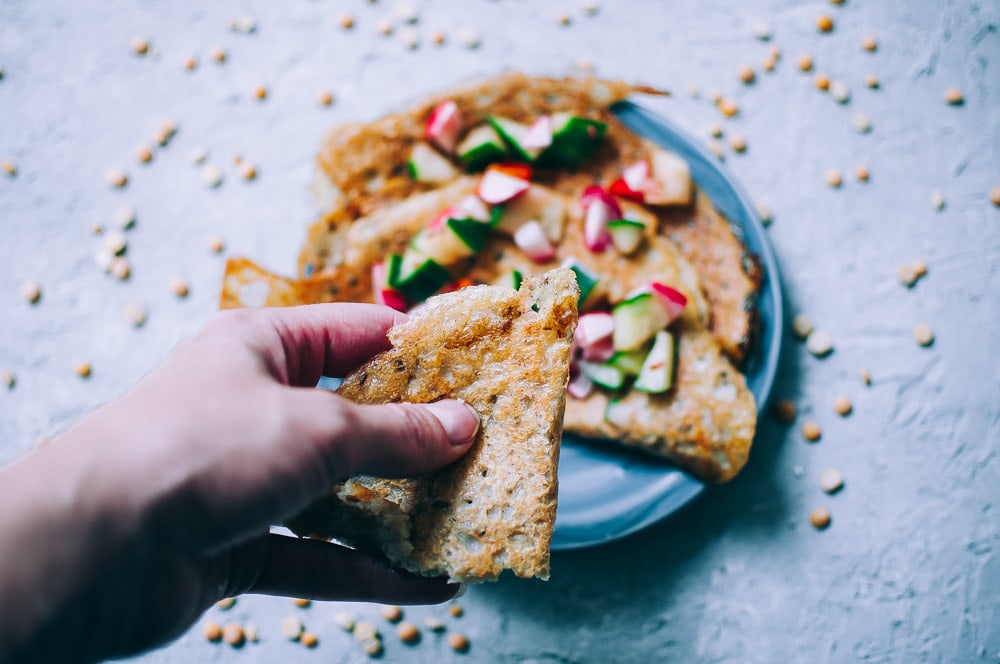
This fermented dosa recipe creates fluffy and crispy dosas filled with flavor and probiotics for a healthy accompaniment to serve alongside your favorite meals, dips and sides!
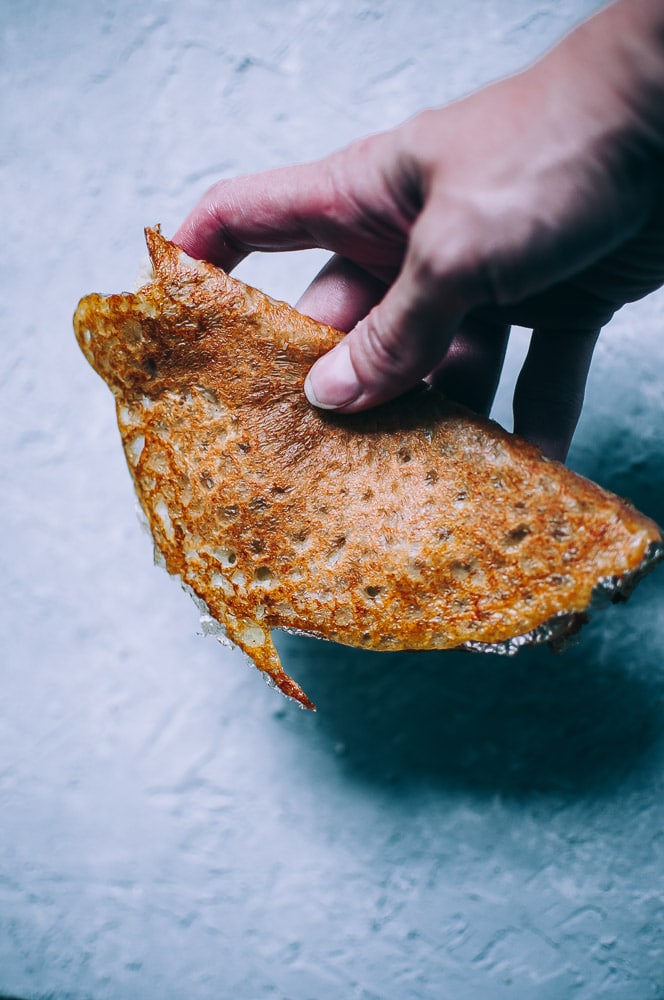
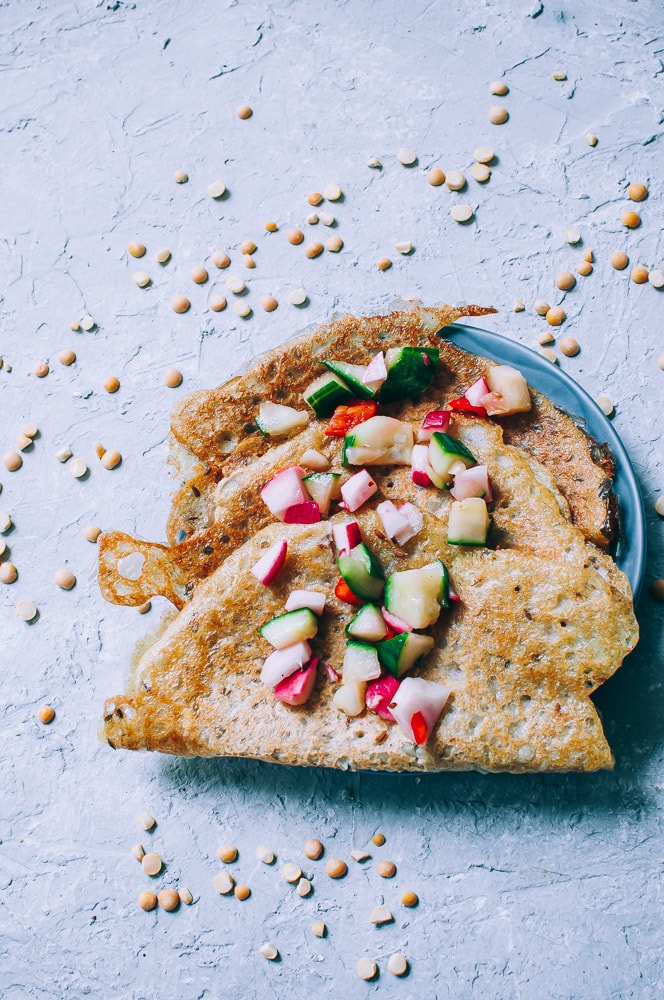
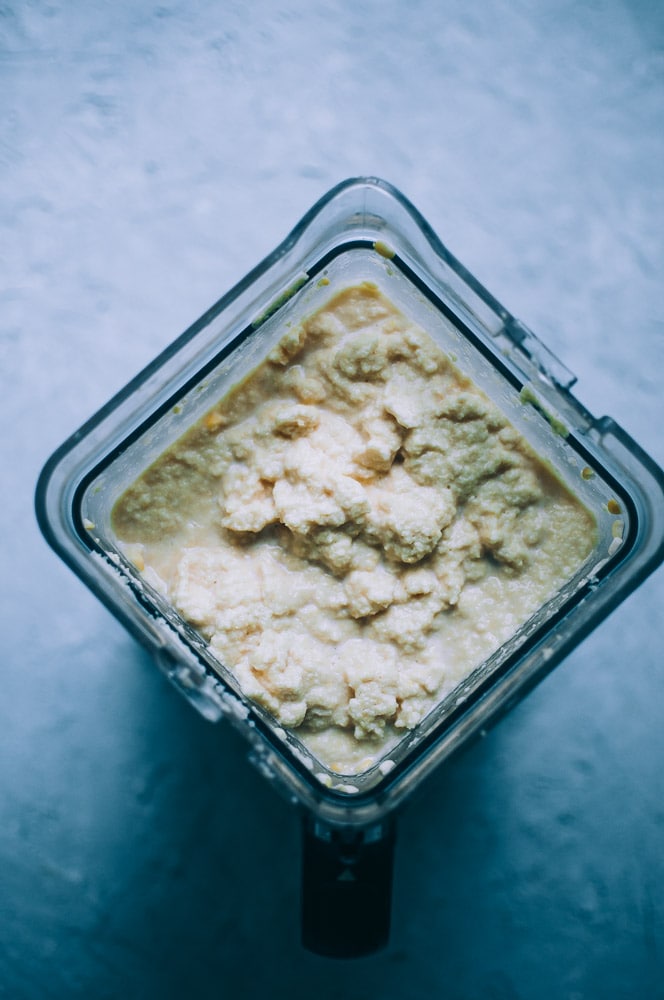
📋 What is Dosa?
Dosa is traditionally a crepe-like creation made from a blend of rice and legumes or pulses that have been soaked, fermented and blended to create a thin pancake-like batter. It is most commonly attributed to Indian cuisine, though it is also to be found in Pakistan, Sri Lanka, Singapore, Malaysia, Bangladesh and Nepal.
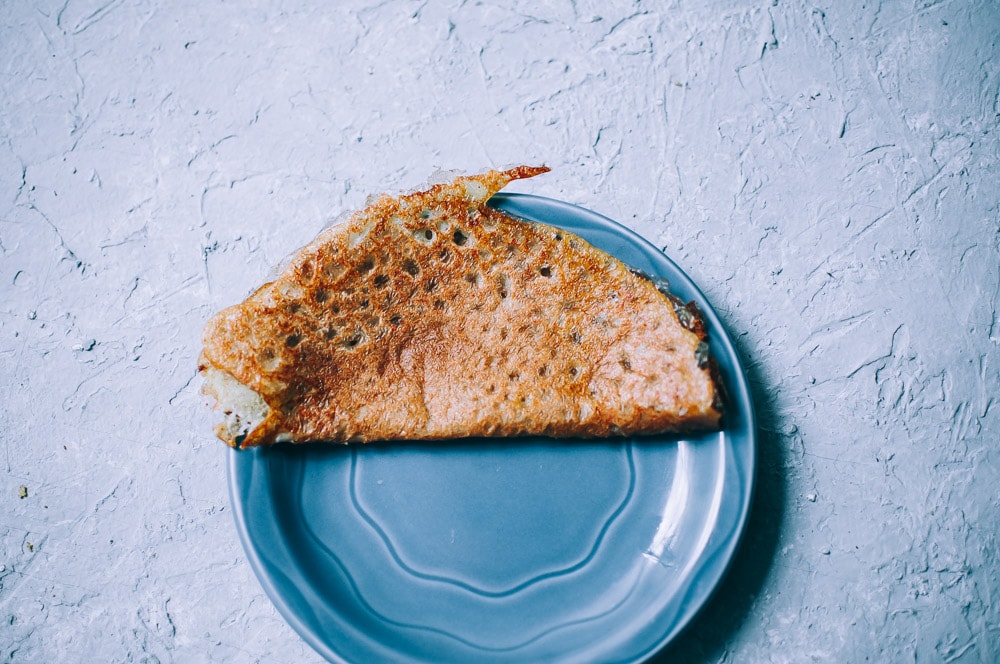
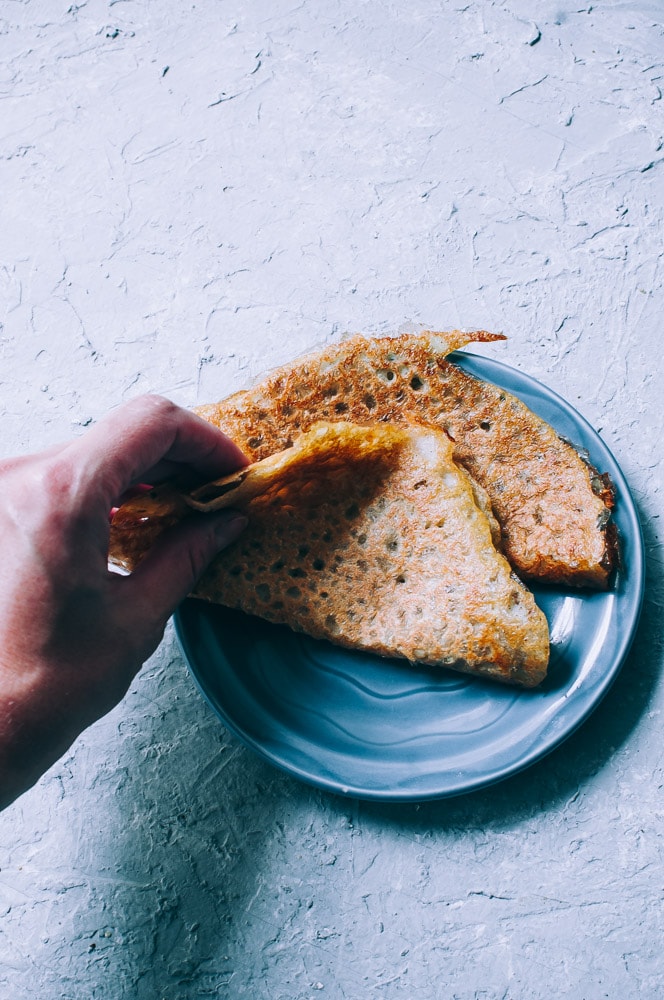
♨️ Why Ferment Dosa Batter?
Not only does fermenting dosa batter lend a delightful sourdough-like flavor to dosas, it also increases nutrients such as B vitamins, makes the legume portion of the batter more easily digestible, and boosts good bacteria for wonderful gut-healing properties.
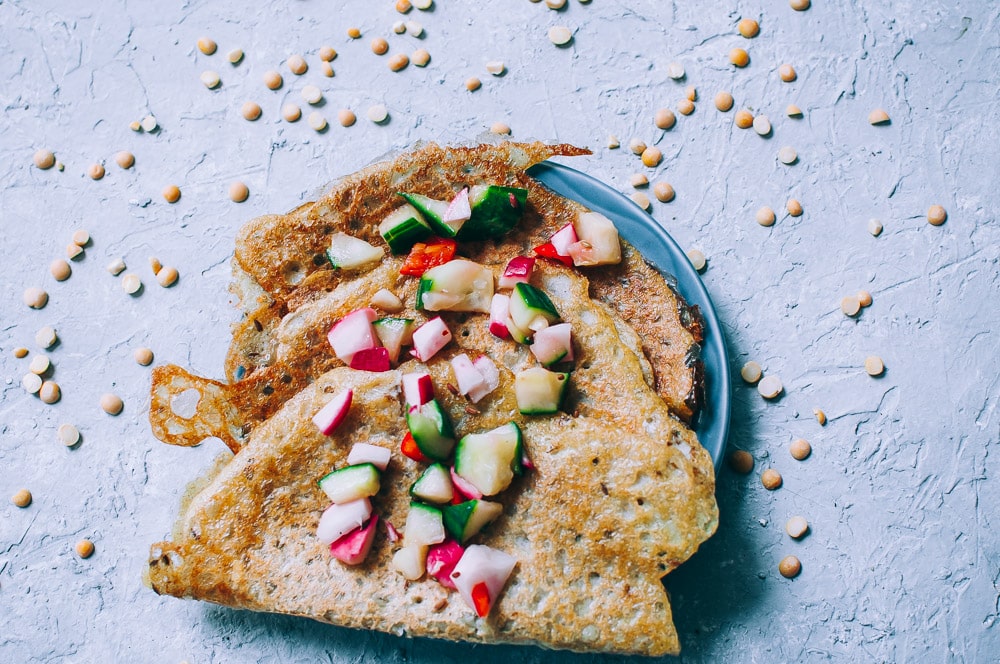
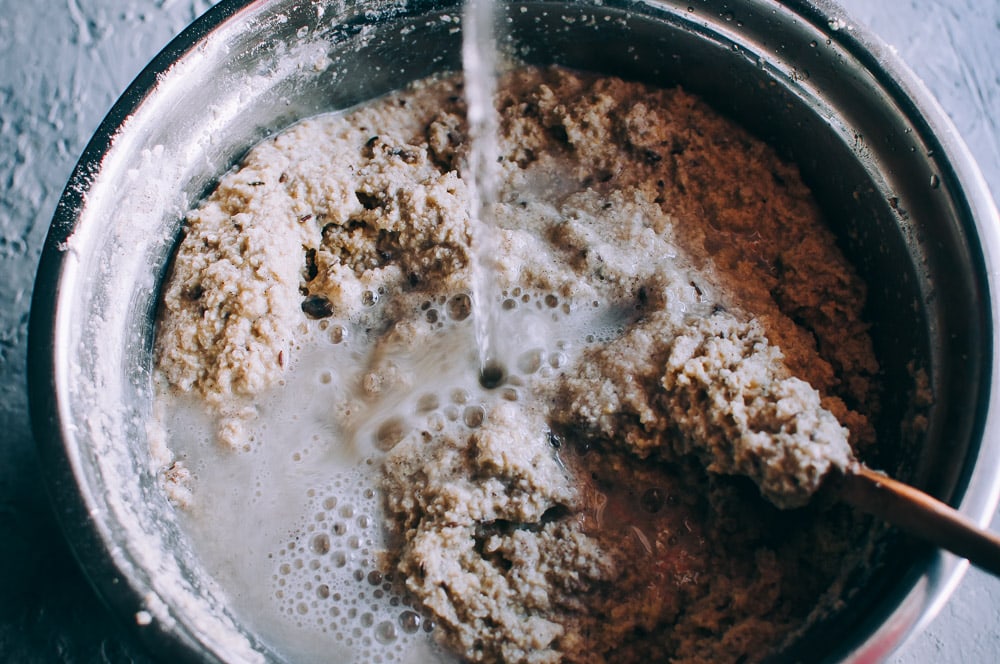
🥣 Recipe Features
- Easy and fun to make.
- Filled with fiber, protein, nutrients and gut-healing probiotics.
- Has a light, fluffy and crispy texture.
- Made with simple, wholesome ingredients.
- Versatile and can be served many different ways (see below for suggestions).
- Has a lovely sourdough like flavor laced with Indian spices.
- Gluten-free, dairy-free, vegan, nut-free, soy-free, sugar-free.
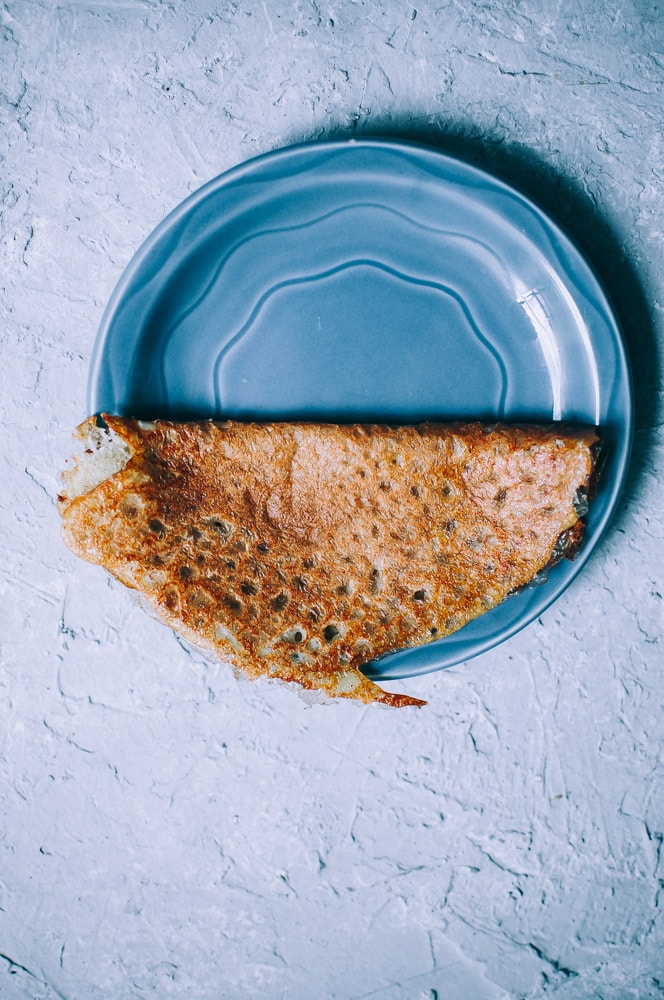
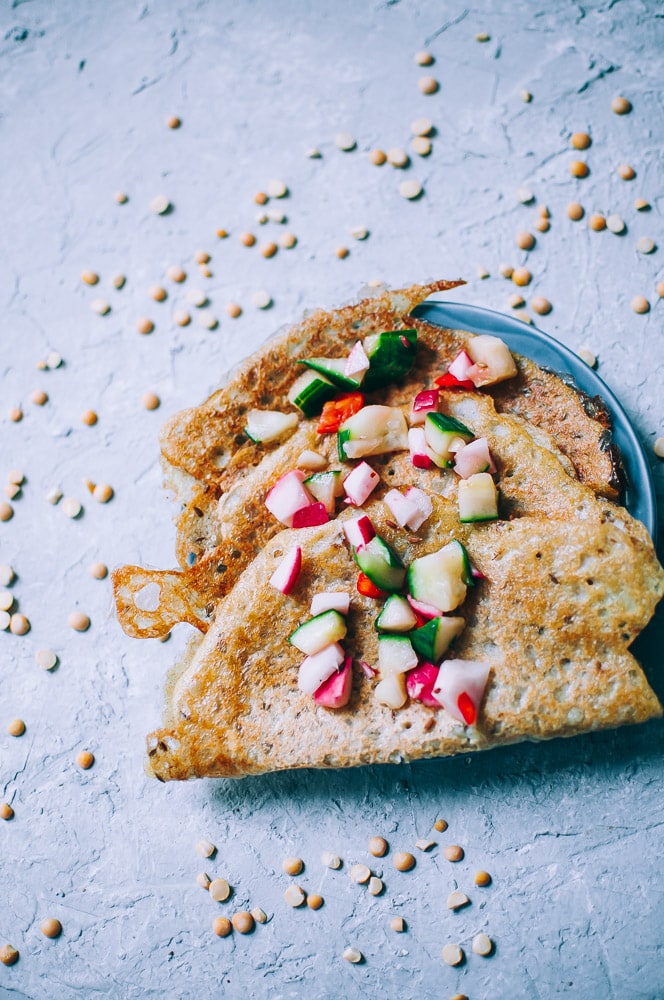
🧂 Ingredients Needed
- Yellow split peas (matar dal).
- Buckwheat flour.
- Spices.
- Water.
Check out the best buckwheat flour substitutes if needed!
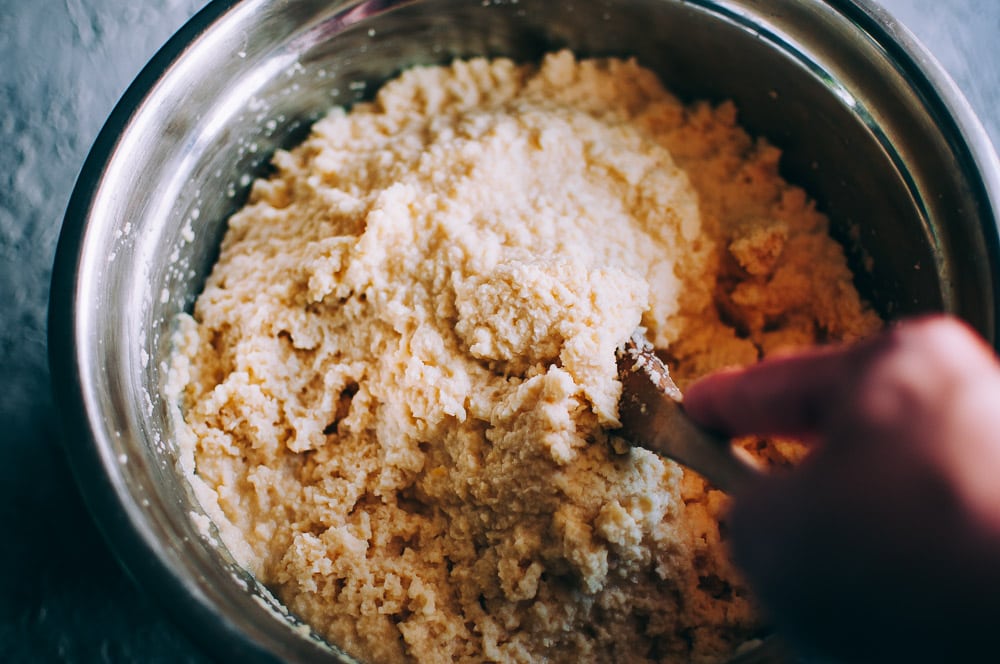
🔪 How to Make Fermented Yellow Split Pea Buckwheat Dosa
- Soak split peas.
- Blend.
- Ferment.
- Mix with flour, water, and spices.
- Add water as necessary to thin the batter.
- Cook and enjoy. Or, store the batter for later use.

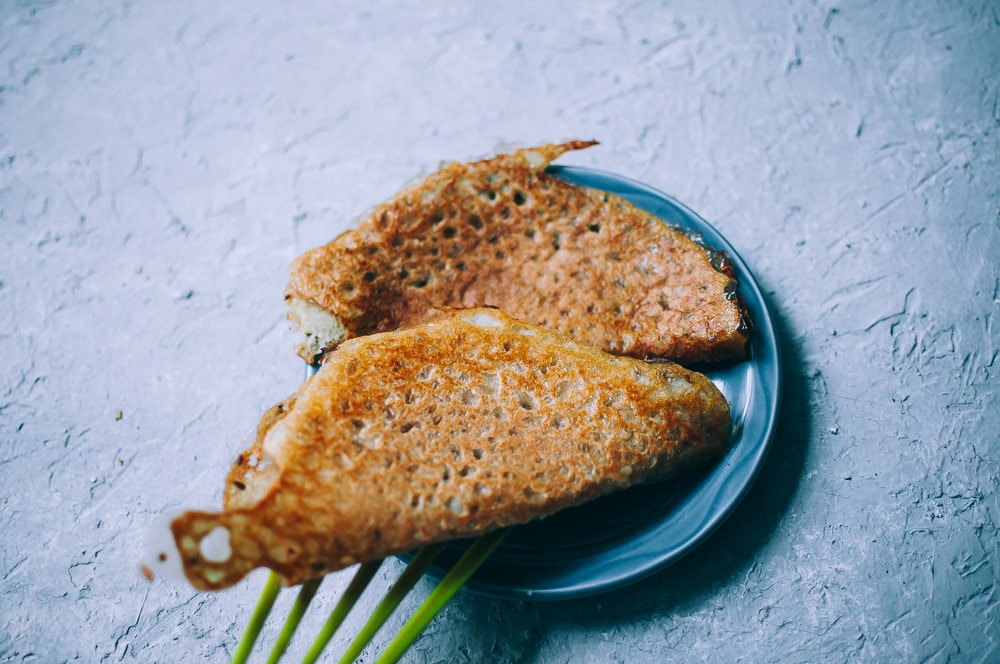
💭 Top Tips for Making Fermented Dosa
- If you have a high quality, high speed blender such as a Vitamix, you can get away with soaking the split peas for 1-2 hours, rather than 3.
- To learn more about probiotics and gut health, check out this post.
- Fermentation may take more or less time dependent upon the environment, ingredients, etc. You are looking for the split pea batter to have nearly doubled in size, smell slightly sour and have bubbles dispersed throughout.
- When it comes to cooking these dosas, the spreadability and cook time can vary greatly dependent upon the pan/skillet used. If you have trouble tilting the pan to spread the batter, you can try quickly spreading it with a silicone spatula, too. If you have great difficulty, try using a different skillet and/or greasing liberally.
- If your batter is not very thin or not spreading very easily, add more water as needed to thin the batter.
- One way to tell that your batter is near thin enough is when there are tiny holes throughout during the cooking process.
- You want to make sure the edges are quite golden and all appears well cooked before lifting and folding. This batter will continue to stick to the pan until it is cooked, for which then it will easily lift.
- You can experiment with your own favorite variety of spices or add-ins as you choose!
- The dosa batter itself can be stored in an airtight container or jar in the fridge for up to 3 days.
- Dosas taste best freshly cooked, but will keep covered at room temperature or the refrigerator for up to 24 hours.
-
Not into fermentation? You can definitely skip the fermentation step for a still tasty dosa! Simply blend soaked split peas, mix with remaining ingredients and cook.
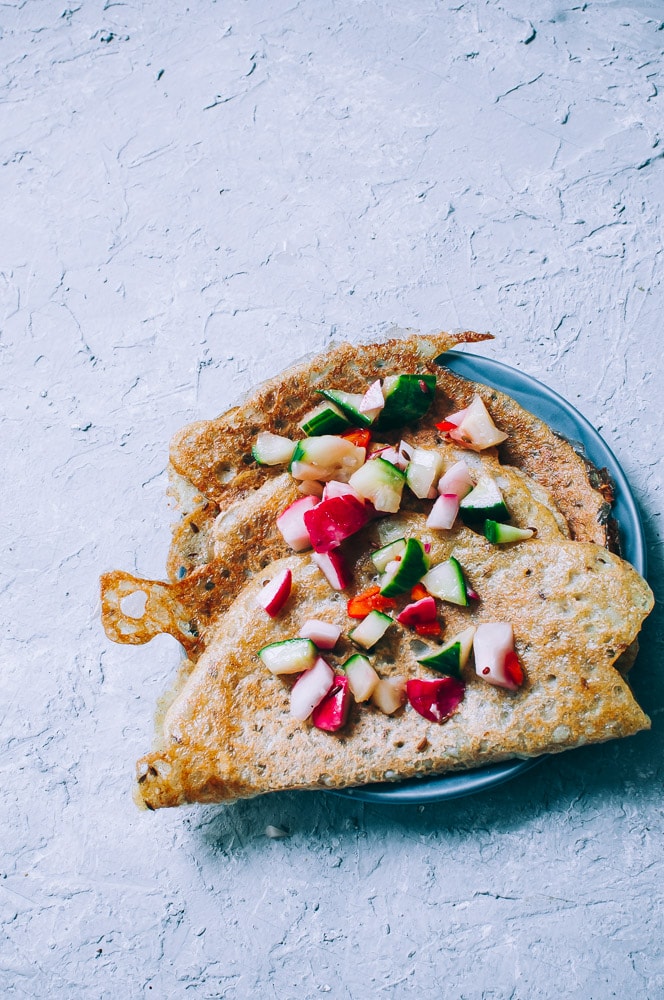
🍽 How to Eat Dosa
Serve it alongside spicy and tangy chutney
Serve alongside soup.
Serve with this spinach and paneer frittata or palak halloumi for a double dose of protein and deliciousness!
As a side accompaniment for Indian curries, like this saag aloo.
As a wrap or side for Bombay potatoes.
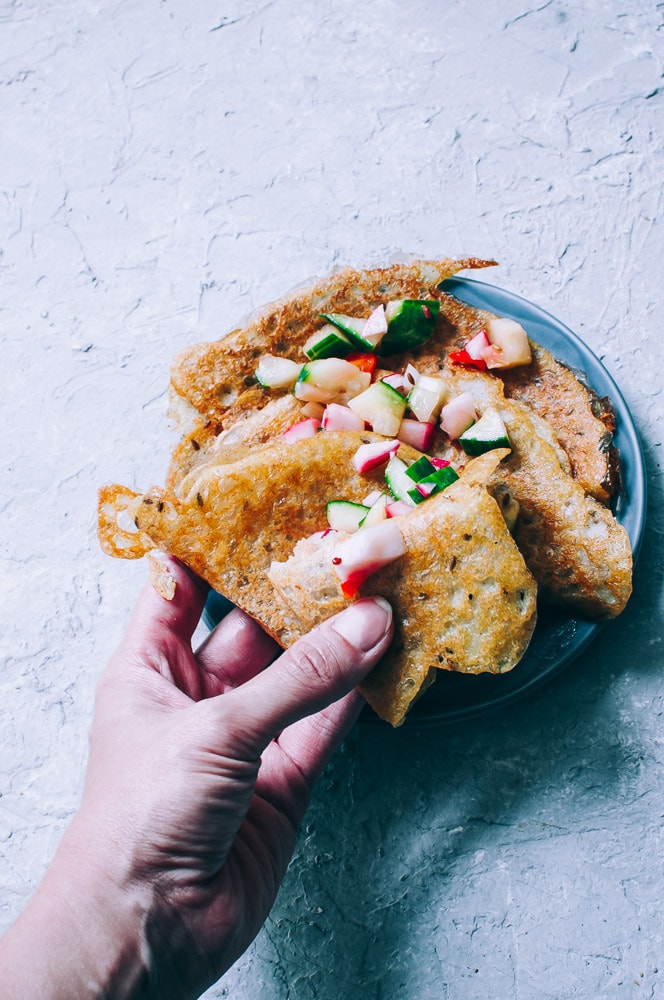
🍲 More Buckwheat Recipes
Gluten-Free Buckwheat Naan Bread
Easy Vegan Banana Bread (Gluten-Free)
Gluten-Free Graham Crackers (Vegan, Refined Sugar-Free)
Gluten-Free Buckwheat Flour Apple Muffins
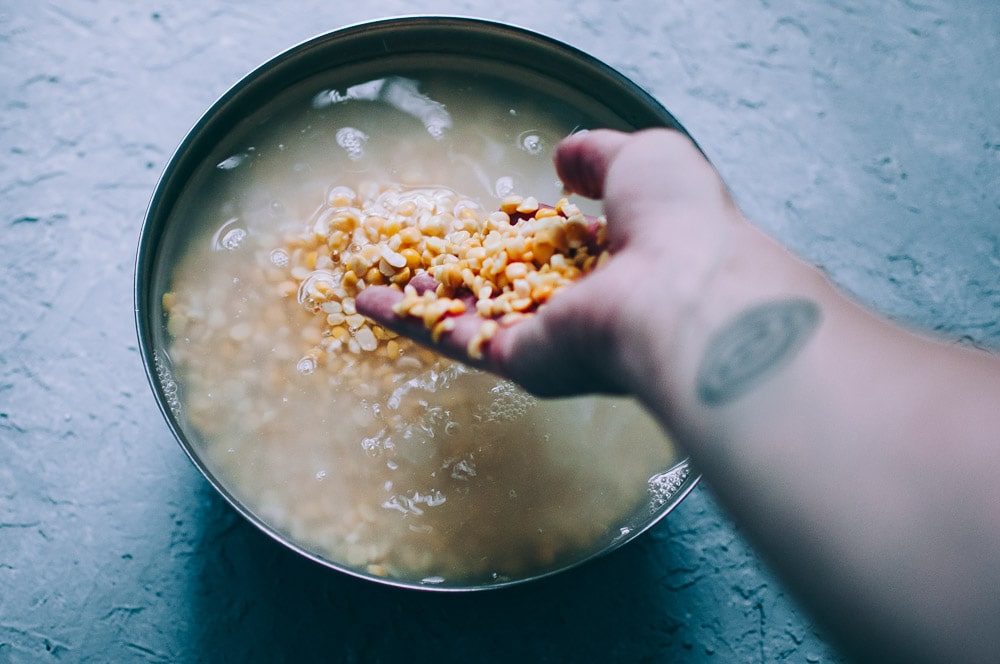
🥘 More Vegan Indian Recipes
Easy Baked Vegan Gluten-Free Samosas
Coconut Chickpea Curry (Vegan)
Spicy Kale & Potato Curry (Vegan, Gluten-Free)
Spicy Coconut Red Lentil Dal (Instant Pot + Stovetop)
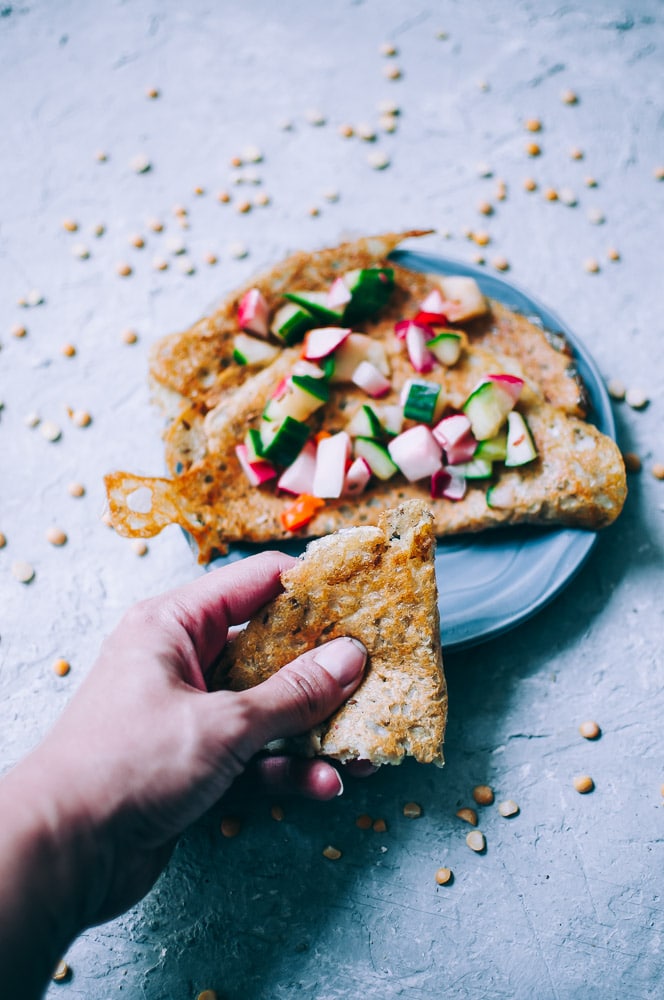
As shown served with my Radish Cucumber Salsa.
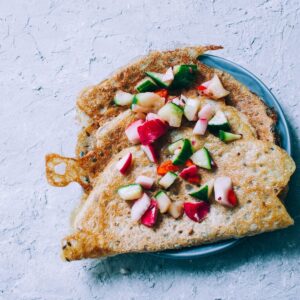
Fermented Buckwheat + Yellow Split Pea (Matar Dal) Dosa Recipe (Gluten-Free, Vegan)
Ingredients
- 3 cups yellow split peas
- 3/4 cup water
- 1 cup buckwheat flour
- 1 tablespoon cumin seeds
- 2 teaspoons sea salt or pink salt
- 1/2 teaspoon red chili flakes
- 7 cups water
Instructions
- Place yellow split peas in a large bowl. Cover with water. Soak for (at least) 3 hours.
- Drain soaked split peas. Place into a blender with 3/4 cup water. Blend until smooth.
- Place the blended split peas in a bowl, jar or container that is not metal, but plastic or glass (metal interferes with fermentation). Cover and put in a warm, dark place to ferment overnight or at least 8 hours (the batter should nearly double in size overnight).
- Place the fermented split peas into a large bowl. Stir in flour, spices and 7 cups of water. Mix until smooth. The batter should be rather thin.
- Heat a cast iron or non-stick skillet over medium heat. Grease lightly with oil.
- Using a ladle (about 1/2 cup), scoop batter, pour into center of heated skillet and moving quickly using the handle of the skillet, tilt and swirl the batter until you have a thin crepe-like circle of batter in the pan.
- Cook for 5 minutes or until the edges are golden brown and the top is firm and cooked throughout. Fold over and remove from skillet. Repeat with remaining batter.
- Enjoy!

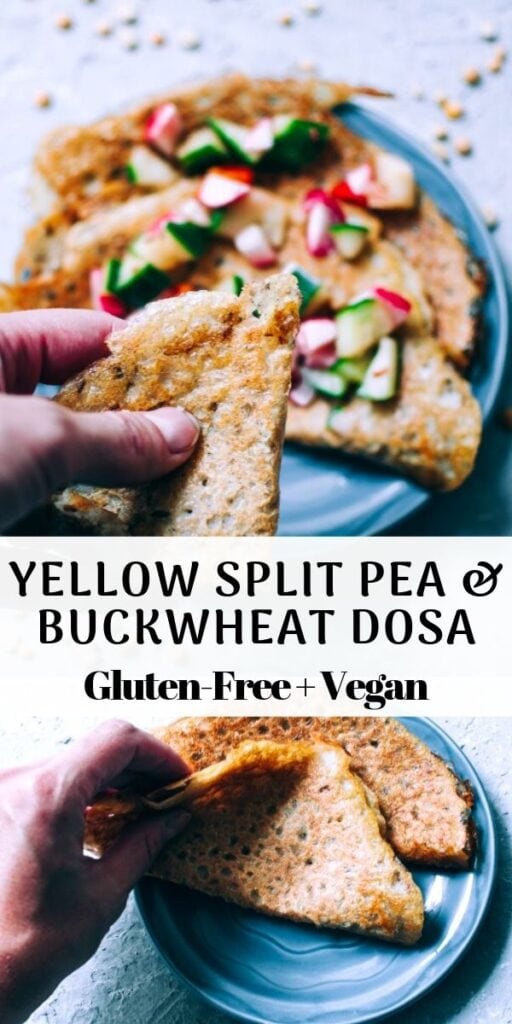
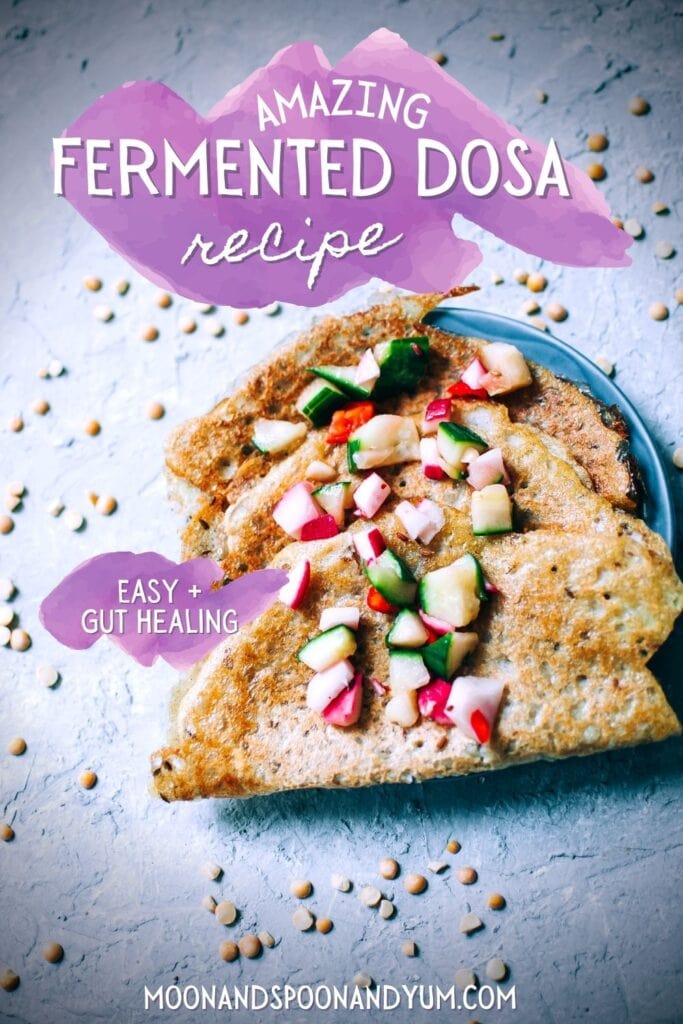


Planning to try these this week. Do you know if they freeze well?
Hi! I’ve never frozen them, but I do think they will freeze just fine! 🙂
Hi Kristen, I was damn curious to try this recipe as it looked great in your post. But it was a bad experience for me. The fermented yellow split peas did rise but wasnt smelling any sour. Also when I mixed the buckwheat flour it didnt blend as seen in your images. The ‘conscious foods’ flour i got has a strong particle retention once mixed. Also the batter while mixing didnt spread or thin enough as shown or desired like it does for conventional dosas made in india. So i compromised with thick pancakes than dosas and taste was a bit blande/neutral. Can you help with this?
Hi Jayesh, I’m so sorry to hear that! Firstly, I’m wondering if longer fermentation or warmer fermentation was needed for the split peas, as it always smells sour when this step commences. Were there at least bubbles throughout? Secondly, I am now wondering about the buckwheat flour used and wondering if it differs drastically from what I usually use. Perhaps it was not as finely ground as some? As for the thickness, this amount of water usually proves sufficient for me, but I do not think it would hurt and I would suggest trying to thin it out further to get the consistency you prefer, as again, the buckwheat flour might play into that a bit too. As for flavor, I’m a bit perplexed with that one because the finished product here is usually quite flavorful both from the fermentation process and the added spices. Again, I’m so sorry this didn’t work out for you! If you try again, I would maybe attempt to ferment longer and and in a warmer place and also maybe use a very finely milled buckwheat flour. Good luck!
Thanks for your quick feedback Kristen. I did check with folks at my workplace, they said curd setting was taking more time than usual in our current weather. So you are right, fermentation did not happen, as it did’nt smell sour nor did I see bubbles or a significant rise. And yes the buckwheat wasn’t very fine visually. I could see particles even after giving a good mix for the batter. So I have got two learnings here – visual and olfactory evidences to check on fermentation process. Also visual check of ingredients / particle size being used. I discovered that the split peas here are called ‘Dalia’ so I had used those, will try fermenting again. Would it be a good idea to mix the final batter in a mixer grinder to ensure fine and consistent particle size? Thanks again.
Hi Jayesh,
I think blending the final batter would be a great idea in this case! I so hope it works out for you the second time around! -Kristen
Hi Jayesh,
I am in California….the dosa batter takes four days to ferment in the winter. I have to place the batter on a sunny window sill covered with a thin cotton napkin that helps in formation of the yeast and eventually fermentation.
Hope this helps.
I love this recipe!! Looks delish and sounds so flavorful 🙂 I need to get some pink salt
Looks like I’ll have to whip up two batches of Dosas – with and without fermentation! Looks delicious!
Thank you for the recipe. I did it. And its taste great.
I’m so happy to hear that! Thank you so much for sharing. 🙂